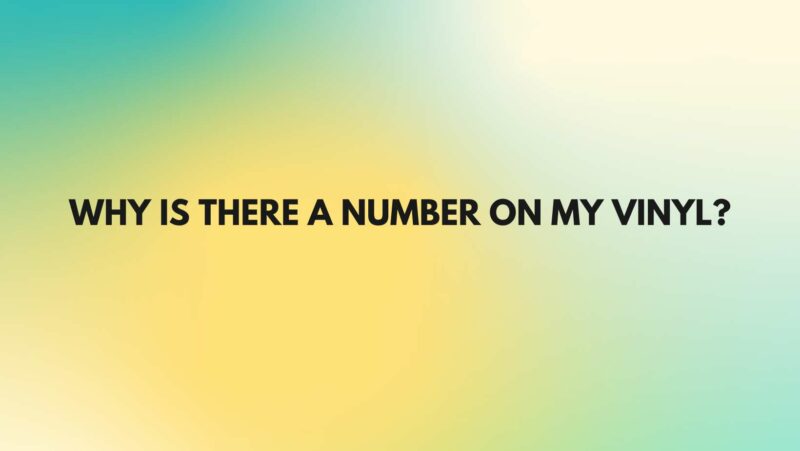Vinyl records, with their analog charm and unique grooves, have been a beloved medium for music enthusiasts and collectors for generations. If you’ve ever noticed a series of numbers etched or printed on your vinyl record, you might be curious about their purpose and significance. These numbers, often referred to as matrix numbers or runout etchings, play a crucial role in the production, identification, and history of vinyl records. In this comprehensive article, we will explore why there is a number on your vinyl and what these numbers can reveal.
- Identification of Individual Pressings
Matrix numbers are unique identifiers assigned to each individual pressing of a vinyl record. These numbers are etched or stamped into the runout groove area on the innermost part of the record. They serve several purposes:
- Distinguishing Different Pressings: Since each pressing of a vinyl record may have minor variations in sound quality or other characteristics, matrix numbers help distinguish one pressing from another.
- Quality Control: Matrix numbers can aid in quality control during the manufacturing process. Records with defects or flaws can be traced back to specific pressings using these identifiers.
- Label and Catalog Number Reference
Matrix numbers often contain information related to the record label and catalog number. Understanding these details can help collectors and enthusiasts identify the record and its label:
- Label Identification: Some matrix numbers include the record label’s initials or code, which can indicate the record’s origin.
- Catalog Number Reference: The matrix number may also reference the record’s unique catalog number, which is used to categorize and identify the release within the label’s catalog.
- Pressing Plant Identification
In addition to labeling the pressing, matrix numbers often include codes or initials that identify the specific pressing plant responsible for manufacturing the record. This information can provide insights into where the record was produced and help collectors differentiate between pressings from different plants:
- Regional Variations: Different pressing plants may produce records with slight variations in sound quality or manufacturing characteristics, creating regional distinctions among collectors.
- Mastering Engineer Information
Some matrix numbers include the initials or codes of the mastering engineer responsible for preparing the audio for vinyl production. This can provide valuable information about the mastering process and may indicate certain sound characteristics associated with that engineer’s work.
- Historical Context
Matrix numbers offer historical context by reflecting the technology and practices used during the record’s production. Changes in matrix numbering conventions can reveal shifts in manufacturing techniques, equipment, and recording technology over the years.
- Collectibility and Rarity
For collectors, matrix numbers can be a valuable resource for identifying rare or collectible pressings. Specific matrix numbers may be associated with limited editions, promotional copies, or early releases, making them highly sought after by collectors.
Conclusion
The numbers etched or stamped onto your vinyl record’s runout groove are far from arbitrary; they serve as vital markers of the record’s identity, origin, and history. Whether you’re a vinyl enthusiast, collector, or audiophile, understanding these matrix numbers adds depth to your appreciation of vinyl records. The next time you spot a series of digits on your vinyl, take a closer look, as they may unveil a fascinating story about the record’s journey from the pressing plant to your turntable.

